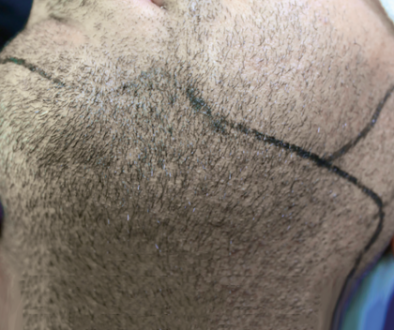Should All Hair Transplant Surgeries be “Stand Alone” Procedures?
 During a recent exchange at our Hair Restoration Discussion Forums, several members began debating whether each hair transplant procedure performed should be able to “stand alone” as a natural restoration or if it’s ever acceptable for patients to undergo an incomplete fix (a low density procedure, a hairline placed in front of balding scalp, et cetera) with the intent of finishing the result via planned future procedures.
During a recent exchange at our Hair Restoration Discussion Forums, several members began debating whether each hair transplant procedure performed should be able to “stand alone” as a natural restoration or if it’s ever acceptable for patients to undergo an incomplete fix (a low density procedure, a hairline placed in front of balding scalp, et cetera) with the intent of finishing the result via planned future procedures.
Frankly, I have mixed feelings on the issue:
In one sense, I agree and think that “stand alone” procedures are important; there are always ways to naturally restore areas of hair loss without creating patterns that do not exist in human physiology.
For example, instead of adding a 1 inch hairline around the otherwise bald scalp of a Norwood VI patient, a hair restoration surgeon can begin more conservatively and instead fill out the mid-scalp and plan to slowly rebuild a stronger hairline and possibly restore the vertex/crown if time, resources, and donor supply allow. To me, this is a logical, effective plan, and if something happened and this patient was never able to undergo a second procedure, the thickened mid-scalp would not create an unnatural appearance and could, in and of itself, stand alone.
However, in another sense, if I’ve learned one thing from analyzing, reviewing, and researching hair restoration procedures over the years, it’s that no patient or procedure is the same. Surgical hair transplantation is a very individualized and unique process, and I think in almost all cases, hair transplant surgeons and patients collaborate and design a restoration plan that satisfies both parties. In some cases, this may involve an initial procedure that may not completely follow or resemble natural scalp/hair physiology.
However, if this is what the patient wants and the surgeon feels the procedure is ethical and responsible, then I see no real reason not to move forward. Should the physician inform the patient that they need to follow through with additional procedures to finalize the restoration and obtain a completely natural result? Yes, and I do think this is good policy and should be thoroughly reviewed and understood.
Additionally, I feel there are other variables that may not be accounted for in the discussion. For example, if a patient is suffering from somewhat of a diffuse pattern and decides to both utilize surgical hair restoration to restore the hairline and start preventive medications like minoxidil and finasteride to restore the mid-scalp simultaneously, then creating a procedure that may not be “stand alone” by itself could be appropriate. I think Scalp Micropigmentation (SMP) could be used in a similar argument and may be considered more heavily when making these types of decisions in the future. Again, just variables that may factor into the equation before coming to a concrete conclusion.
Altogether, I can completely see both sides of the argument – creating stand alone results with each and every procedure versus properly informing the patient of requiring multiple procedures while responsibly fulfilling patient desires, and I think it still boils down to the fact that each patient is unique and trying to apply blanket statements or steadfast rules may not work.
Do you have an opinion on whether or not all hair transplant surgeries should be stand alone procedures? If so, feel free to visit the discussion thread: Stand Alone Procedures.
_______________
Blake Bloxham – formerly “Future_HT_Doc”
Editorial Assistant and Forum Co-Moderator for the Hair Transplant Network, the Hair Loss Learning Center, the Hair Loss Q&A Blog, and the Hair Restoration Forum
Follow our community on Twitter
Watch hair transplant videos on YouTube
Get Proven Hair Loss Treatments at the Best Prices by visiting our new Online Hair Loss Product Store
Technorati Tags: Hair Restoration, hair transplant, hair loss, bald scalp, hair restoration surgeon, hair restoration procedures, Surgical hair transplantation, minoxidil, finasteride, Scalp Micropigmentation, SMP, hair transplant surgeries




July 28, 2011 @ 12:37 am
I had Rhinoplasty hair transplant in india in August of ’07 and I am extremely happy with the results. I had a bump on my nose since childhood which was completely removed.
July 27, 2011 @ 2:12 pm
I have done many years of research about Hair Transplantation and have gone to many consultation. I was very impressed with the doctor and decided to have my surgery done 1 year ago. Now, I am a new man with a full set of hair and confidence.